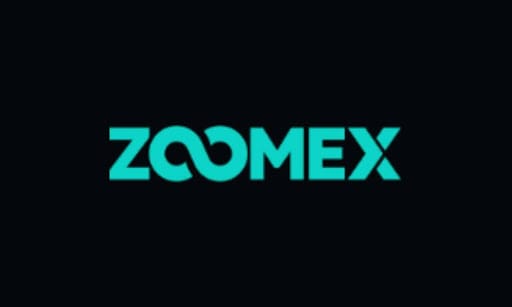Top Bitcoin Alternative Cryptocurrencies
TL;DR: While bitcoin is the first and most well-known cryptocurrency, many other alternative cryptos have since emerged trying to build upon bitcoin's innovations. Top alternatives include Ethereum, Litecoin, Cardano, Polkadot, Solana, and more. Let's dive deeper into the key contenders.
Since Bitcoin launched in 2009 as the pioneering cryptocurrency, thousands of alternative cryptos ("altcoins") have been created with unique capabilities and use cases.
While bitcoin remains the market leader, several other cryptocurrencies have gained meaningful adoption and market value by improving upon bitcoin's shortcomings or targeting specific goals.
Here is an overview of the top alternative cryptocurrencies beyond bitcoin:
Ethereum (ETH)
Ethereum is likely the most successful bitcoin alternative based on its market capitalization and blockchain adoption. It launched in 2015 through a public crowd sale led by crypto pioneer Vitalik Buterin.
Key differences of Ethereum include:
- Support for smart contracts - decentralized immutable programs for exchange of value without intermediaries
- Capability to develop decentralized applications (dApps) on the Ethereum blockchain
- A larger block size and faster block time than bitcoin for more transactions per second
- A different consensus algorithm (ETH is transitioning to proof-of-stake instead of bitcoin's proof-of-work)
- Issuance model that is inflationary with no supply cap compared to bitcoin's fixed limit
As a programmable blockchain, Ethereum serves as a foundational infrastructure rather than just a payment network. It enables broad decentralized finance (DeFi) use cases from tokens to lending protocols.
Litecoin (LTC)
Litecoin launched in 2011 with the goal of becoming the "silver" to bitcoin's "gold" - a lighter and faster alternative cryptocurrency for smaller payments.
Key contrasts between Litecoin and bitcoin include:
- Faster block times. Litecoin adds blocks every 2.5 minutes instead of bitcoin's 10 minutes. This enables faster transaction confirmation.
- More coins and different issuance model. The Litecoin total supply is 84 million compared to bitcoin's 21 million.
- Utilization of the Scrypt proof-of-work algorithm instead of bitcoin's SHA-256. This was meant to allow a more decentralized mining landscape.
- Lower transaction fees enabled by the larger block size capability.
- Integration of newer technologies like Lightning Network and SegWit more rapidly than bitcoin.
While Litecoin has lower activity and market cap than Ethereum, its longevity and liquidity make it one of the top altcoin options.
Cardano (ADA)
Cardano brands itself as a "third generation" blockchain network focused on addressing security, scalability, and sustainability issues plaguing first and second generation cryptos.
It was founded by Ethereum co-founder Charles Hoskinson in 2015 but did not fully launch until 2017. Key features include:
- Emphasis on peer-reviewed research and scientific approach to its decentralized software design. The team includes academics and engineers.
- Two-layer architecture with separation between the Cardano Settlement Layer (accounting) and the Cardano Computation Layer (smart contracts). This enhances security and flexibility.
- Implementation of a proof-of-stake consensus model called Ouroboros for energy efficiency.
- Capability to evolve its technology stack through soft forks.
Cardano aims to rival Ethereum as the leading programmable blockchain but has less adoption currently. It also faces stiff competition from other next-gen platforms.
Polkadot (DOT)
Polkadot's goal is to enable cross-chain transfers and application interoperability between different blockchains.
Its key technical differentiators include:
- A "heterogeneous multi-chain" rather than one singular chain. This parallel chain design can process many transactions simultaneously to increase scalability.
- Parachains that connect to the central Relay chain and offer specialized use cases. External blockchains can also plug into Polkadot.
- A proof-of-stake consensus model that leverages nominated validators to validate parachains.
- Shared security and trust between all connected parachains and the Relay chain.
By supporting cross-chain transfers between blockchains, Polkadot aims to support a decentralized web of blockchains rather than competing singular networks.
Solana (SOL)
Solana is a newer layer-1 smart contract platform that promises to challenge Ethereum’s dominance through vastly greater speed and scalability. Key features include:
- Claimed capability to process over 50,000 transactions per second and 400ms block times through its unique proof-of-history consensus built on proof-of-stake.
- Fast finality enabling near instant settlement of transactions.
- Low fees of just $0.00025 per transaction.
- Architecture optimized for scalability including horizontal sharding capabilities.
Solana has quickly risen into the top 10 market cap cryptocurrencies, but still has much lower developer activity compared to Ethereum. Critics also debate the decentralization tradeoffs of its proprietary consensus design.
Conclusion
Beyond bitcoin, users today have a vast array of alternative cryptocurrencies to serve needs ranging from smart contract functionality to greater scalability, transaction privacy, institutional-grade capabilities, and beyond.
While bitcoin remains the household name in crypto, coins like Ethereum have proven to be highly successful alternative projects powering key innovations in the broader decentralized economy. The crypto space is much bigger than just bitcoin.




